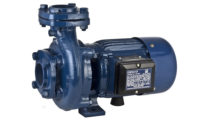After joining the International Association of Plumbing and Mechanical Officials (IAPMO) in 2015 from the Water Quality Association (WQA), I began studying the U.S. and international plumbing codes in greater detail.
Having worked in the water treatment industry since 1997, I was familiar with the model plumbing codes and state plumbing codes, but since there were very few requirements for water treatment equipment, it was never a significant regulatory focus for the WQA or its members. The model plumbing codes are updated every three years and with each three-year cycle, water quality continues to become a bigger focus for consumer health and safety in homes and businesses.
Drinking water contamination is a global problem. People who travel quickly notice the varying water quality aspects throughout the United States and abroad. Most travelers would never consider drinking tap water in emerging countries or even in many developed countries.
Even in the United States, where tap water is considered safe, we continue to hear about tap water contaminated with lead, disinfection byproducts, perfluochemicals, arsenic — this list is never ending. Drinking water contamination notices and related publicity have increased the need and demand for residential and commercial water treatment products. How do the plumbing codes ensure all the water treatment products being installed to improve tap water are safe or that they do not negatively affect the plumbing design?
Several existing standards are referenced in the Uniform Plumbing Code (UPC) and the International Residential Code (IRC). These standards include NSF/ANSI 44 for residential cation exchange water softeners, NSF/ANSI 58 for point of use ROs and NSF/ANSI 42 and 53 for residential water filtration equipment. One of the major gaps that exists in the plumbing codes today is a set of requirements for commercial water treatment equipment. The primary reason for this gap is that a standard to evaluate the health and safety of commercial water treatment equipment did not exist. The ASSE 1087 standard has been developed and published to fill this gap.
In October 2018, ASSE International published ASSE 1087, a comprehensive health and safety standard to cover commercial and food service water treatment equipment. Regulators and inspectors in the United States, throughout Canada, and where adopted internationally will no longer need to rely on manufacturers’ performance data when approving the use of commercial water treatment equipment in buildings, restaurants, hospitals, hotels and schools. This article discusses the key sections of the 1087 standard and the products included in its scope.
The scope
The 1087 standard includes plumbed-in water treatment devices and components, point of entry (POE) and point of use (POU), that are used in buildings (e.g. businesses, schools, hospitals, churches, hotels, restaurants, etc.) to improve the quality of the water. The standard covers all water treatment products that are connected to the building’s plumbing system for potable water. Examples of water treatment equipment include: softeners, POE filters, POU filters, deionizers, POE reverse osmosis equipment, ultraviolet systems, ozone systems, alkaline equipment, distillers, and any other water treatment equipment used in restaurants and commercial buildings. The standard is not intended to cover products used for process water, wastewater applications or residential water treatment equipment.
Performance requirements and compliance testing
The following is a list of the standard’s requirements and a brief description of the purpose of each test.
Service flow and pressure drop testing is required on complete systems: Service flow rate and pressure drop information is critical when sizing the plumbing system of new buildings or for determining the proper size treatment equipment in existing buildings. This testing includes requirements for specified service flow rates and maximum flow rates (peak flow) with corresponding pressure drop data. This data can be used by plumbing engineers for proper sizing of systems to comply with the plumbing code.
Backsiphonage during system regeneration testing is required on products such as cation exchange water softeners that use brine to regenerate the system. Areas of the United States are beginning to require regenerating water treatment equipment to be installed with an additional back-flow prevention device. This test has been designed to confirm the system will not allow fluid in the brine tank to enter the potable water system. Systems meeting this design will not need an additional backflow prevention device because this safety mechanism is designed into the water treatment system. It is important to note this test is designed to evaluate backflow of the brine tank. Proper air gaps are also required on systems that include a drain connection.
Bypass flow capacity during system regeneration testing is required on products such as cation exchange water softeners. Flow rate and pressure drop testing will be conducted on the water treatment equipment while the automatic bypass is engaged. This test is designed to ensure the building will not be restricted of water if there is a demand when the system is regenerating.
The 1087 standard includes four structural integrity tests to verify the integrity of the system or component. A 24-hour pressure loss test is required on complete systems and pressure bearing components. This test has been designed to demonstrate the system or component will not leak under pressure over a 24-hour period. The pressure shock (water hammer) test checks the system’s ability to withstand water hammer up to twice the maximum rated working pressure of the device. The hydrostatic test is performed to ensure the system or component will be able to withstand peak pressures experienced in a plumbing system. Finally, cycle testing is performed to ensure the system or component will be able to withstand repeated pressure cycling for a simulated 20 years of life.
Material safety testing refers to the existing NSF/ANSI 61 standard that has been used for decades to ensure products are safe to contract drinking water. Point-of-use products would reference the corresponding NSF/ANSI standard covering filters, ROs and distillers. The 1087 standard also requires systems and components to comply with the requirements of NSF/ANSI 372 to verify compliance with the U.S. EPA’s lead-free requirements under the safe drinking water act.
Contaminant reduction testing to verify marketed claims is not currently required in the standard because most commercial products are specifically designed and constructed for the commercial building’s water treatment needs. Creating contaminant reduction test protocols for uniquely designed products of varying sizes can be challenging. However, industry manufacturers have already initiated proposed revisions to the standard to include voluntary contaminant reduction testing to verify the system’s marketed claims. As these protocols are finalized and validated through laboratory testing, the standard will be opened for revision.
The ASSE 1087 standard will provide regulators, inspectors and code developers an opportunity to improve health and safety requirements for commercial water treatment products that connect to the building drinking water supply. It seems that the news media publishes new articles daily that highlight major concerns about poor drinking water quality around the globe.
Water treatment in commercial buildings continues to expand because of the water quality issues. Creating the ASSE 1087 standard to cover all commercial drinking water treatment equipment is an important step to improve the safety of drinking water. The new 1087 standard follows ASSE’s motto, “Prevention Rather than Cure,” by allowing companies, inspectors and regulators to verify the safety and performance of commercial water treatment equipment before it is installed in a building.
Plumbing codes are quickly recognizing the need for high-quality water treatment equipment. As new products are engineered, ASSE is committed to helping the industry create new product standards that can ultimately be referenced in the plumbing codes to protect public health and safety.




